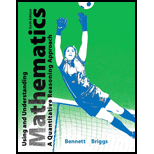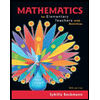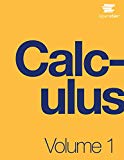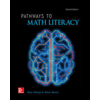
Using and Understanding Mathematics: A Quantitative Reasoning Approach (6th Edition)
6th Edition
ISBN: 9780321914620
Author: Jeffrey O. Bennett, William L. Briggs
Publisher: PEARSON
expand_more
expand_more
format_list_bulleted
Concept explainers
Textbook Question
Chapter 4.E, Problem 70E
Fairness Issues. Choose a tax question that has issues of fairness associated with it (for example, capital gains rates, the marnage penalty, or the alternative minimum tax [AMT]). Use the Web to investigate the current status of this question. Have new laws been passed that affect it? What are the advantages and disadvantages of recent or proposed changes, and who supports the changes? Summarize your own opinion about whether current tax law is unfair and, if so, should be done about it.
Expert Solution & Answer
Want to see the full answer?
Check out a sample textbook solution
Students have asked these similar questions
Police, fire, and ambulance dispatchers, also called public safety telecommunicators, answer emergency and non-emergency calls. They work in emergency communication centers. Dispatchers must be available around the clock, so they often have to work evenings, weekends, and holidays. Overtime and long shifts - sometimes 12 hours - are common. Many states require dispatchers to become certified. The median annual wage for police, fire and ambulance dispatchers was $37,410 in May, 2014. SOURCE: Bureau of Labor and Statistics, U.S. Department of Labor, Occupational Outlook Handbook, 2016 - 2017 Edition, Police, Fire, and Ambulance Dispatchers.When a police radio dispatcher receives a call, he/she must determine the type of emergency and its location and decide the appropriate response on the basis of agency procedures.A small town has 6 police cars. When a radio dispatcher receives a call, depending on the nature of the situation, no cars, one car, two cars, three cars, four cars, five…
Based solely on the information given, do you have reason to question the results of the following hypothetical study? Explain your reasoning.
A study by a conservative foundation is designed to assess a new Democratic spending plan.
Question content area bottom
Part 1
Is there reason to question the results? Select all that apply.
A.
Yes, there is reason. The variables that were measured are not identified.
B.
Yes, there is reason. It makes sense that a Democratic spending plan would be studied by a conservative foundation.
C.
No, there is not reason. There is no bias in the study.
D.
Yes, there is reason. There is a possibility of bias in the study.
E.
No, there is not reason. It is unlikely that there are any confounding variables in the study.
F.
No, there is not reason. The goal of the study is clear.
Identify the data collection method used in the following statements:
A researcher investigates the influence of online payments on consumer spending.
A local TV network asked the voters to indicate whom they voted as they exited the polling booth.
The school administration asked the students whether they are willing to have an increase in laboratory fees if there is an upgrade of computers.
A social welfare organization gathers information on hospital patients with mental disorders.
An investigator uses information from various business reports for analysis.
Chapter 4 Solutions
Using and Understanding Mathematics: A Quantitative Reasoning Approach (6th Edition)
Ch. 4.A - By evaluating your monthly budget, you can learn...Ch. 4.A - The two things you must keep track of in order to...Ch. 4.A - A negative monthly cash flow means that Your...Ch. 4.A - When you are making your monthly budget, what...Ch. 4.A - For the average person, the single biggest...Ch. 4.A - According to Figure 4.1, which of the following...Ch. 4.A - Which of the following in necessary if you want to...Ch. 4.A - Prob. 8QQCh. 4.A - Prob. 9QQCh. 4.A - According to data from the National Center for...
Ch. 4.A - Prob. 1ECh. 4.A - Prob. 2ECh. 4.A - Prob. 3ECh. 4.A - What is cash flow? Briefly describe your options...Ch. 4.A - Summarize how average patterns change with age....Ch. 4.A - Prob. 6ECh. 4.A - When I figured our monthly budget, I included only...Ch. 4.A - My monthly cash flow was- $ 150, which explained...Ch. 4.A - My vacation travel cost a total of $1800, which I...Ch. 4.A - Emma and Emily are good friends who do everything...Ch. 4.A - Brandon discovered that his daily routine of...Ch. 4.A - I bought the cheapest health insurance I could...Ch. 4.A - Extravagant Spending? Computer the total cost per...Ch. 4.A - Extravagant Spending? Computer the total cost per...Ch. 4.A - Extravagant Spending? Computer the total cost per...Ch. 4.A - Extravagant Spending? Computer the total cost per...Ch. 4.A - Extravagant Spending? Computer the total cost per...Ch. 4.A - Extravagant Spending? Computer the total cost per...Ch. 4.A - Extravagant Spending? Computer the total cost per...Ch. 4.A - Extravagant Spending? Computer the total cost per...Ch. 4.A - Interest Payment. Find the monthly interest...Ch. 4.A - Interest Payment. Find the monthly interest...Ch. 4.A - Interest Payment. Find the monthly interest...Ch. 4.A - Interest Payment. Find the monthly interest...Ch. 4.A - Prorating Expenses. Prorate the following expenses...Ch. 4.A - Prorating Expenses. Prorate the following expenses...Ch. 4.A - Prorating Expenses. Prorate the following expenses...Ch. 4.A - Prorating Expenses. Prorate the following expenses...Ch. 4.A - Prorating Expenses. Prorate the following expenses...Ch. 4.A - Prorating Expenses. Prorate the following expenses...Ch. 4.A - Net Cash Flow. The following tables show expenses...Ch. 4.A - Net Cash Flow. The following tables show expenses...Ch. 4.A - Net Cash Flow. The following tables show expenses...Ch. 4.A - Net Cash Flow. The following tables show expenses...Ch. 4.A - Budget Allocations. Determine whether the...Ch. 4.A - Budget Allocations. Determine whether the...Ch. 4.A - Budget Allocations. Determine whether the...Ch. 4.A - Budget Allocations. Determine whether the...Ch. 4.A - Budget Allocations. Determine whether the...Ch. 4.A - Budget Allocations. Determine whether the...Ch. 4.A - Making Decision. Consider the following...Ch. 4.A - Making Decision. Consider the following...Ch. 4.A - Making Decision. Consider the following...Ch. 4.A - Prob. 44ECh. 4.A - Prob. 45ECh. 4.A - Prob. 46ECh. 4.A - Prob. 47ECh. 4.A - Prob. 48ECh. 4.A - Prob. 49ECh. 4.A - Prob. 50ECh. 4.A - Choices. Consider the following pairs of options...Ch. 4.A - Choices. Consider the following pairs of options...Ch. 4.A - Laundry Upgrade. Suppose that you currently own a...Ch. 4.A - Solar Payback Period. Julie is considering...Ch. 4.A - Insurance Deductibles. Many insurance policies...Ch. 4.A - Car leases. Consider the following three lease...Ch. 4.A - 57. Health Costs. Assume that you have a...Ch. 4.A - Prob. 58ECh. 4.A - 59-62: Personal Finances. The following exercises...Ch. 4.A - 59-62: Personal Finances. The following exercises...Ch. 4.A - Prob. 61ECh. 4.A - Prob. 62ECh. 4.A - Prob. 63ECh. 4.A - Prob. 64ECh. 4.A - Prob. 65ECh. 4.A - Prob. 66ECh. 4.B - Consider two investments, one earning simple...Ch. 4.B - An account with interest compounded annually and...Ch. 4.B - Prob. 3QQCh. 4.B - An account with an APR of 4% and quarterly...Ch. 4.B - With the same deposit, APR, and length of time, an...Ch. 4.B - The annual percentage yield (APY) is always a....Ch. 4.B - Consider two accounts earning compounding...Ch. 4.B - If you deposit $500 in an investment with an APR...Ch. 4.B - Suppose you use the compound interest formula to...Ch. 4.B - A bank account with compound interest exhibits...Ch. 4.B - What is the difference between simple interest and...Ch. 4.B - Explain how New College could claim that a debt of...Ch. 4.B - Explain why the term APR/n appears in the compound...Ch. 4.B - State the compound interest formula for interest...Ch. 4.B - State the compound interest formula for interest...Ch. 4.B - What is an annual percentage yield (APY)? Explain...Ch. 4.B - What is continuous compounding? How does the APY...Ch. 4.B - Give an example of a situation in which you might...Ch. 4.B - Simple Bank offers simple interest at 4.5% per...Ch. 4.B - Both banks were paying the same annual percentage...Ch. 4.B - The bank that pays the highest annual percentage...Ch. 4.B - No bank could afford to pay interest every...Ch. 4.B - My bank paid an annual interest rate (APR) of...Ch. 4.B - If you deposit $10,000 in an investment account...Ch. 4.B - Review of powers. Use the skills covered in the...Ch. 4.B - Review of powers. Use the skills covered in the...Ch. 4.B - Review of powers. Use the skills covered in the...Ch. 4.B - Review of powers. Use the skills covered in the...Ch. 4.B - Review of powers. Use the skills covered in the...Ch. 4.B - Review of powers. Use the skills covered in the...Ch. 4.B - Review of powers. Use the skills covered in the...Ch. 4.B - Review of powers. Use the skills covered in the...Ch. 4.B - Review of powers. Use the skills covered in the...Ch. 4.B - Review of powers. Use the skills covered in the...Ch. 4.B - Review of powers. Use the skills covered in the...Ch. 4.B - Review of powers. Use the skills covered in the...Ch. 4.B - Prob. 27ECh. 4.B - Algebra Review. Use the skills covered in the...Ch. 4.B - Algebra Review. Use the skills covered in the...Ch. 4.B - Algebra Review. Use the skills covered in the...Ch. 4.B - Algebra Review. Use the skills covered in the...Ch. 4.B - Algebra Review. Use the skills covered in the...Ch. 4.B - Algebra Review. Use the skills covered in the...Ch. 4.B - Algebra Review. Use the skills covered in the...Ch. 4.B - Algebra Review. Use the skills covered in the...Ch. 4.B - 27-50: Algebra Review. Use the skills covered in...Ch. 4.B - 27-50: Algebra Review. Use the skills covered in...Ch. 4.B - Prob. 38ECh. 4.B - Prob. 39ECh. 4.B - Prob. 40ECh. 4.B - Algebra Review. Use the skills covered in the...Ch. 4.B - Prob. 42ECh. 4.B - Prob. 43ECh. 4.B - Algebra Review. Use the skills covered in the...Ch. 4.B - Algebra Review. Use the skills covered in the...Ch. 4.B - Algebra Review. Use the skills covered in the...Ch. 4.B - 27-50: Algebra Review. Use the skills covered in...Ch. 4.B - Algebra Review. Use the skills covered in the...Ch. 4.B - Prob. 49ECh. 4.B - Prob. 50ECh. 4.B - 51-54: Simple Interest. Calculate the amount of...Ch. 4.B - Simple Interest. Calculate the amount of money you...Ch. 4.B - Simple Interest. Calculate the amount of money you...Ch. 4.B - Simple Interest. Calculate the amount of money you...Ch. 4.B - Simple versus Compound Interest. Complete the...Ch. 4.B - Simple versus Compound Interest. Complete the...Ch. 4.B - Compound Interest. Use compound interest formula...Ch. 4.B - Compound Interest. Use compound interest formula...Ch. 4.B - Compound Interest. Use compound interest formula...Ch. 4.B - Compound Interest. Use compound interest formula...Ch. 4.B - Compound Interest. Use compound interest formula...Ch. 4.B - Compound Interest. Use compound interest formula...Ch. 4.B - Compounding More Than Once a Year. Use the...Ch. 4.B - Compounding More Than Once a Year. Use the...Ch. 4.B - Compounding More Than Once a Year. Use the...Ch. 4.B - Compounding More Than Once a Year. Use the...Ch. 4.B - Compounding More Than Once a Year. Use the...Ch. 4.B - Compounding More Than Once a Year. Use the...Ch. 4.B - Compounding More Than Once a Year. Use the...Ch. 4.B - Compounding More Than Once a Year. Use the...Ch. 4.B - Prob. 71ECh. 4.B - Annual Percentage Yield (APY). Find the annual...Ch. 4.B - Prob. 73ECh. 4.B - Prob. 74ECh. 4.B - Prob. 75ECh. 4.B - Prob. 76ECh. 4.B - Prob. 77ECh. 4.B - 75-80: Continuous Compounding: Use the formula for...Ch. 4.B - 75-80: Continuous Compounding: Use the formula for...Ch. 4.B - 75-80: Continuous Compounding: Use the formula for...Ch. 4.B - Prob. 81ECh. 4.B - Prob. 82ECh. 4.B - Planning Ahead. How much must you deposit today...Ch. 4.B - Prob. 84ECh. 4.B - Prob. 85ECh. 4.B - Prob. 86ECh. 4.B - Prob. 87ECh. 4.B - 85-88: College Fund. How much must you deposit...Ch. 4.B - 89-90: Small Rate Differences. The following pairs...Ch. 4.B - 89-90: Small Rate Differences. The following pairs...Ch. 4.B - Prob. 91ECh. 4.B - Prob. 92ECh. 4.B - Prob. 93ECh. 4.B - Understanding Annual Percentage Yield (APY). a....Ch. 4.B - Comparing Investment Plans. Rosa invests $3000 in...Ch. 4.B - Comparing Investment Plans. Paula invests $4000 in...Ch. 4.B - Prob. 97ECh. 4.B - Prob. 98ECh. 4.B - Prob. 99ECh. 4.B - Finding Time Periods. Use a calculator and...Ch. 4.B - 99-101: Finding Time Periods. Use a calculator and...Ch. 4.B - 102. Continuous Compounding. Explore continuous...Ch. 4.B - Prob. 103ECh. 4.B - Prob. 104ECh. 4.B - Prob. 105ECh. 4.B - Prob. 106ECh. 4.B - Prob. 107ECh. 4.B - Prob. 108ECh. 4.B - Prob. 109ECh. 4.B - Prob. 110ECh. 4.B - 111. Compound Interest with Excel: Multiple...Ch. 4.B - 112. Effective Yield. Use the effective yield...Ch. 4.B - 113. Exponential Function. Use a calculator,...Ch. 4.C - In the savings plan formula, assuming all other...Ch. 4.C - In the savings plan formula, assuming all other...Ch. 4.C - The total return on a 5-year investment is a. the...Ch. 4.C - Prob. 4QQCh. 4.C - Suppose you deposited $100 per month into a...Ch. 4.C - The best investment would be characterized by...Ch. 4.C - Company A has 1 million shares outstanding and a...Ch. 4.C - Excalibur’s P/E ratio of 75 tells you that a. its...Ch. 4.C - The price you pay for a bond with a face value of...Ch. 4.C - The 1-year return on a mutual fund a. must be...Ch. 4.C - What is a savings plan? Explain the savings plan...Ch. 4.C - Give an example of a situation in which you might...Ch. 4.C - Distinguish between the total return and the...Ch. 4.C - Briefly describe the three basic types of...Ch. 4.C - Explain what we mean by an investment’s liquidity,...Ch. 4.C - Contrast the historical returns for different...Ch. 4.C - Define the face value, coupon rate, and maturity...Ch. 4.C - Briefly describe the meaning of key data values...Ch. 4.C - If interest rates stay at 4% APR and I continue to...Ch. 4.C - My financial advisor showed me that I could reach...Ch. 4.C - I’m putting all my savings into stocks because...Ch. 4.C - I’m hoping to withdraw money to buy my first house...Ch. 4.C - I bought a fund advertised on the web that says it...Ch. 4.C - I’m already retired, so I need low-risk...Ch. 4.C - Savings Plan Formula: Assume monthly deposits and...Ch. 4.C - Savings Plan Formula: Assume monthly deposits and...Ch. 4.C - Savings Plan Formula: Assume monthly deposits and...Ch. 4.C - 15-18: Savings Plan Formula: Assume monthly...Ch. 4.C - 19-22: Investment Plans. Use the savings plan...Ch. 4.C - Prob. 20ECh. 4.C - 19-22: Investment Plans. Use the savings plan...Ch. 4.C - 19-22: Investment Plans. Use the savings plan...Ch. 4.C - Prob. 23ECh. 4.C - Prob. 24ECh. 4.C - Prob. 25ECh. 4.C - Planning for the Future. Use the savings plan...Ch. 4.C - 27. Comfortable Retirement. Suppose you are 30...Ch. 4.C - 28. Very Comfortable Retirement. Suppose you are...Ch. 4.C - Total and Annual Returns. Compute the total and...Ch. 4.C - 29-36. Total and Annual Returns. Compute the total...Ch. 4.C - Total and Annual Returns. Compute the total and...Ch. 4.C - 29-36. Total and Annual Returns. Compute the total...Ch. 4.C - 29-36. Total and Annual Returns. Compute the total...Ch. 4.C - Prob. 34ECh. 4.C - Prob. 35ECh. 4.C - Prob. 36ECh. 4.C - Prob. 37ECh. 4.C - Prob. 38ECh. 4.C - Prob. 39ECh. 4.C - Prob. 40ECh. 4.C - Prob. 41ECh. 4.C - 41-44: Price-to-Earning Ratio. For the stocks...Ch. 4.C - Prob. 43ECh. 4.C - Prob. 44ECh. 4.C - Prob. 45ECh. 4.C - Prob. 46ECh. 4.C - Bond Yields. Compute the current yield on the...Ch. 4.C - Prob. 48ECh. 4.C - Prob. 49ECh. 4.C - Bond Yields. Compute the current yield on the...Ch. 4.C - Prob. 51ECh. 4.C - Prob. 52ECh. 4.C - Prob. 53ECh. 4.C - Prob. 54ECh. 4.C - Mutual Fund Growth. Answer the following...Ch. 4.C - Prob. 56ECh. 4.C - Who Comes Out Ahead? Consider the following pairs...Ch. 4.C - Prob. 58ECh. 4.C - Prob. 59ECh. 4.C - Prob. 60ECh. 4.C - Prob. 61ECh. 4.C - Prob. 62ECh. 4.C - 61-64: Will It Work? Suppose you want to...Ch. 4.C - 61-64: Will It Work? Suppose you want to...Ch. 4.C - 65. Total Return on Stock. Suppose you bought XYZ...Ch. 4.C - Prob. 66ECh. 4.C - Death and the Maven (A True Story). In December...Ch. 4.C - Prob. 68ECh. 4.C - Get Started Early! Mitch and Bill are both age 75....Ch. 4.C - Prob. 70ECh. 4.C - Prob. 71ECh. 4.C - Prob. 72ECh. 4.C - Prob. 73ECh. 4.C - Prob. 74ECh. 4.C - 75. Online Brokers. Visit the websites of at least...Ch. 4.C - 76. Personal Investment options. Does your...Ch. 4.C - 77. Savings Plan Formula with Excel. Use the...Ch. 4.C - Prob. 78ECh. 4.C - Prob. 79ECh. 4.D - In the loan payment formula, assuming all other...Ch. 4.D - With the same APR and amount borrowed, a 15-year...Ch. 4.D - With the same term and amount borrowed, a loan...Ch. 4.D - In the early years of a 30-year mortgage loan, a....Ch. 4.D - If you make monthly payments of $1000on a 10-year...Ch. 4.D - Credit card loans are different than installment...Ch. 4.D - A loan of $200,000 that carries a 2-point...Ch. 4.D - 8. A $120,000 loan with $500 in closing costs plus...Ch. 4.D - You are currently paying off a student loan with...Ch. 4.D - Consider two mortgage loans with the same amount...Ch. 4.D - Prob. 1ECh. 4.D - Prob. 2ECh. 4.D - Explain, in general terms, how the portions of...Ch. 4.D - Prob. 4ECh. 4.D - Prob. 5ECh. 4.D - Prob. 6ECh. 4.D - The interest rate on my student loan is only 6%,...Ch. 4.D - My student loans were all 20-year loans at...Ch. 4.D - I make only the minimum required payments on my...Ch. 4.D - I carry a large credit card balance, and I had a...Ch. 4.D - I had a choice between a fixed rate mortgage at 4%...Ch. 4.D - Fixed rate loans with 15-year terms have lower...Ch. 4.D - Prob. 13ECh. 4.D - loan Terminology. Consider the following loans. a....Ch. 4.D - Prob. 15ECh. 4.D - Prob. 16ECh. 4.D - Prob. 17ECh. 4.D - Prob. 18ECh. 4.D - Prob. 19ECh. 4.D - Prob. 20ECh. 4.D - Prob. 21ECh. 4.D - 15-24: Loan Payments. Consider the following...Ch. 4.D - 15-24: Loan Payments. Consider the following...Ch. 4.D - 15-24: Loan Payments. Consider the following...Ch. 4.D - Prob. 25ECh. 4.D - Principal and lnterest. For the followrng loans,...Ch. 4.D - Choosing a Personal Loan. You need to borrow...Ch. 4.D - Choosing a Personal Loan. You need to borrow $4000...Ch. 4.D - CredIt Card Debt. Suppose that on January 1 you...Ch. 4.D - CredIt Card Debt. Suppose that on January 1 you...Ch. 4.D - CredIt Card Debt. Suppose that on January 1 you...Ch. 4.D - CredIt Card Debt. Suppose that on January 1 you...Ch. 4.D - Credft Card Debt. Assume you have a balance of...Ch. 4.D - Credit Card Debt. Repeat the table in Exercise 33,...Ch. 4.D - Credit Card Woes. The following table shows thc...Ch. 4.D - Teaser Rate. You have a total credit card debt of...Ch. 4.D - Prob. 37ECh. 4.D - Prob. 38ECh. 4.D - 37-40: Compartng Loan Options. Compare the monthly...Ch. 4.D - 37-40: Compartng Loan Options. Compare the monthly...Ch. 4.D - 41–44: Closing Costs. Consider the following pairs...Ch. 4.D - Prob. 42ECh. 4.D - Prob. 43ECh. 4.D - Prob. 44ECh. 4.D - Accelerated Loan Paymant. Suppose you have a...Ch. 4.D - 46. Accelerated Loan PaymentSuppose you have a...Ch. 4.D - 47. ARM Rate Approximations. You have a choice...Ch. 4.D - Prob. 48ECh. 4.D - How Much House Can You Afford? You can allord...Ch. 4.D - Prob. 50ECh. 4.D - Prob. 51ECh. 4.D - Prob. 52ECh. 4.D - Prob. 53ECh. 4.D - Prob. 54ECh. 4.D - Prob. 55ECh. 4.D - 56. Credit Card Statement. Look carefully at the...Ch. 4.D - 57. Credit Card Comparisons. Visit a website that...Ch. 4.D - 58. Home Financing. Visit a website that offers...Ch. 4.D - Prob. 59ECh. 4.D - 60. Student Financial Aid. There are many websites...Ch. 4.D - Prob. 61ECh. 4.D - Prob. 62ECh. 4.D - Prob. 63ECh. 4.D - Prob. 64ECh. 4.E - The total amount of income you receive is called...Ch. 4.E - Prob. 2QQCh. 4.E - Prob. 3QQCh. 4.E - 4. Suppose you are in the 15% marginal tax bracket...Ch. 4.E - Prob. 5QQCh. 4.E - 6. Assume you are in the 25% tax bracket and you...Ch. 4.E - Prob. 7QQCh. 4.E - Prob. 8QQCh. 4.E - Prob. 9QQCh. 4.E - Prob. 10QQCh. 4.E - Prob. 1ECh. 4.E - Prob. 2ECh. 4.E - What are exemptions and deductions? How should you...Ch. 4.E - What is meant by a progressive income tax? Explain...Ch. 4.E - 5. What is the difference between a tax deduction...Ch. 4.E - 6. Explain how a deduction, such as the mortgage...Ch. 4.E - What are FICA taxes? What type of income is...Ch. 4.E - Prob. 8ECh. 4.E - Prob. 9ECh. 4.E - Prob. 10ECh. 4.E - We’re both single with no children and we both...Ch. 4.E - Prob. 12ECh. 4.E - Prob. 13ECh. 4.E - Prob. 14ECh. 4.E - Prob. 15ECh. 4.E - Prob. 16ECh. 4.E - Prob. 17ECh. 4.E - Prob. 18ECh. 4.E - Prob. 19ECh. 4.E - Prob. 20ECh. 4.E - Prob. 21ECh. 4.E - Income on Tax Forms. Find the gross income,...Ch. 4.E - 23–24: To Itemize or Not. Decide whether you...Ch. 4.E - Prob. 24ECh. 4.E - Income Calculations. Compute the gross Income,...Ch. 4.E - 25–28: Income Calculations. Compute the gross...Ch. 4.E - 25–28: Income Calculations. Compute the gross...Ch. 4.E - 25–28: Income Calculations. Compute the gross...Ch. 4.E - Marginal Tax Calculations. Use the marginal tax...Ch. 4.E - Marginal Tax Calculations. Use the marginal tax...Ch. 4.E - 29-36: Marginal Tax Calculations. Use the marginal...Ch. 4.E - Marginal Tax Calculations. Use the marginal tax...Ch. 4.E - Prob. 33ECh. 4.E - Prob. 34ECh. 4.E - Prob. 35ECh. 4.E - Prob. 36ECh. 4.E - Prob. 37ECh. 4.E - 37–42: Tax Credits and Tax Deductions. Determine...Ch. 4.E - Prob. 39ECh. 4.E - Prob. 40ECh. 4.E - 37–42: Tax Credits and Tax Deductions. Determine...Ch. 4.E - Prob. 42ECh. 4.E - Rent or Own? Consider the following choices...Ch. 4.E - Rent or Own? Consider the following choices...Ch. 4.E - Prob. 45ECh. 4.E - Prob. 46ECh. 4.E - FICA Taxes. In the following situations, calculate...Ch. 4.E - FICA Taxes. In the following situations, calculate...Ch. 4.E - FICA Taxes. In the following situations, calculate...Ch. 4.E - FICA Taxes. In the following situations, calculate...Ch. 4.E - FICA Taxes. In the following situations, calculate...Ch. 4.E - 47–52: FICA Taxes. In the following situations,...Ch. 4.E - Prob. 53ECh. 4.E - Prob. 54ECh. 4.E - Prob. 55ECh. 4.E - Prob. 56ECh. 4.E - Prob. 57ECh. 4.E - 55–58: Tax-Deferred Savings Plans. Calculate the...Ch. 4.E - 59–62; Marriage Penalty. Consider the following...Ch. 4.E - 59–62; Marriage Penalty. Consider the following...Ch. 4.E - Prob. 61ECh. 4.E - Prob. 62ECh. 4.E - Prob. 63ECh. 4.E - Prob. 64ECh. 4.E - Prob. 65ECh. 4.E - Prob. 66ECh. 4.E - Prob. 67ECh. 4.E - Prob. 68ECh. 4.E - Prob. 69ECh. 4.E - Fairness Issues. Choose a tax question that has...Ch. 4.E - Prob. 71ECh. 4.E - 72. Your Tax Return. Briefly describe your own...Ch. 4.F - Prob. 1QQCh. 4.F - Prob. 2QQCh. 4.F - Prob. 3QQCh. 4.F - Prob. 4QQCh. 4.F - Prob. 5QQCh. 4.F - Prob. 6QQCh. 4.F - Prob. 7QQCh. 4.F - Prob. 8QQCh. 4.F - Prob. 9QQCh. 4.F - Prob. 10QQCh. 4.F - Define receipts, outlays, net income, surplus, and...Ch. 4.F - Prob. 2ECh. 4.F - 3. Explain why years of running deficits makes it...Ch. 4.F - What is the gross domestic product (GDP), and why...Ch. 4.F - Briefly summarize the makeup of federal receipts...Ch. 4.F - Prob. 6ECh. 4.F - Prob. 7ECh. 4.F - Prob. 8ECh. 4.F - My share of the federal government’s debt is...Ch. 4.F - My share of the federal government’s annual...Ch. 4.F - Prob. 11ECh. 4.F - Prob. 12ECh. 4.F - Prob. 13ECh. 4.F - Prob. 14ECh. 4.F - Prob. 15ECh. 4.F - 16. Personal Budget Basics. Suppose your after-tax...Ch. 4.F - Prob. 17ECh. 4.F - Prob. 18ECh. 4.F - Prob. 19ECh. 4.F - Prob. 20ECh. 4.F - Prob. 21ECh. 4.F - Prob. 22ECh. 4.F - Prob. 23ECh. 4.F - Prob. 24ECh. 4.F - Prob. 25ECh. 4.F - Prob. 26ECh. 4.F - Prob. 27ECh. 4.F - Prob. 28ECh. 4.F - Prob. 29ECh. 4.F - Prob. 30ECh. 4.F - Prob. 31ECh. 4.F - Prob. 32ECh. 4.F - On-and Off-Budget. Suppose the government has a...Ch. 4.F - Prob. 34ECh. 4.F - Prob. 35ECh. 4.F - Prob. 36ECh. 4.F - Prob. 37ECh. 4.F - Paving with the Federal Debt. Suppose you began...Ch. 4.F - 39. Rising Debt. Suppose the federal debt...Ch. 4.F - Rising Debt. Suppose the federal debt increases at...Ch. 4.F - Prob. 41ECh. 4.F - Prob. 42ECh. 4.F - Prob. 43ECh. 4.F - Prob. 44ECh. 4.F - Prob. 45ECh. 4.F - Prob. 46ECh. 4.F - Poiltical Action. This unit outlined numerous...Ch. 4.F - Prob. 48ECh. 4.F - 49. Social Security Problems. Research the current...Ch. 4.F - 50. Social Security Solutions. Research various...Ch. 4.F - Medicare. Like Social Sccurit, Medicare is...
Knowledge Booster
Learn more about
Need a deep-dive on the concept behind this application? Look no further. Learn more about this topic, subject and related others by exploring similar questions and additional content below.Similar questions
- APT Accounting and tax consultancy provide various services, including tax, mortgage, book keeping, audit and personal financial planning. They have examined the behavior of their clients. Based on the experience, they estimate that 10% of their clients seek help for mortgages and 5% for personal financial planning. Of those who seek help for mortgages, 40% also seek help for personal financial planning. a. What percentage of the clients seek help for both mortgages and personal financial planning? b. What percentage of the clients do not seek help for either of these two services?arrow_forwardPolice, fire, and ambulance dispatchers, also called public safety telecommunicators, answer emergency and non-emergency calls. They work in emergency communication centers. Dispatchers must be available around the clock, so they often have to work evenings, weekends, and holidays. Overtime and long shifts - sometimes 12 hours - are common. Many states reuire dispatchers to become certified. The median annual wage for police, fire and ambulance dispatchers was $37,410 in May, 2014. SOURCE: Bureau of Labor and Statistics, U.S. Department of Labor, Occupational Outlook Handbook, 2016 - 2017 Edition, Police, Fire, and Ambulance Dispatchers When a police radio dispatcher receives a call, he/she must determine the type of emergency and its location and decide the appropriate response on the basis of agency procedures. A small town has 4 police officers. When a radio dispatcher receives a call, depending on the nature of the situation, no officer, one officer, two officers, three officers,…arrow_forwardAccording to "The Sociology of Health, Illness, and Health Care" by Weitz. What is Medicare? O The same thing as Obama Care O Government assisted programs for newborns and zygotes. O a federally funded insurance program for disabled and elderly people. O Medical programs that assist people who make less than 25k a year.arrow_forward
- Based solely on the information given, do you have reason to question the results of the following hypothetical study? Explain your reasoning. A study by a conservative foundation is designed to assess a new Democratic spending plan. Is there reason to question the results? Select all that apply. O A. Yes, there is reason. It makes sense that a Democratic spending plan would be studied by a conservative foundation. B. No, there is not reason. The goal of the study is clear. O C. Yes, there is reason. There is a possibility of bias in the study. D. No, there is not reason. It is unlikely that there are any confounding variables in the study. O E. Yes, there is reason. The variables that were measured are not identified. O F. No, there is not reason. There is no bias in the study. O O O O O 0arrow_forwardAre cigarettes bad for people? Cigarette smoking involves tar, carbon monoxide, and nicotine (measured in milligrams). The first two are definitely not good for a person's health, and the last ingredient can cause addiction. Brand Tar Nicotine CO Brand Tar Nicotine CO AlpineBenson & HedgesBull DurhamCamel LightsCarltonChesterfieldGolden LightsKentKoolL&MLark LightsMarlboroMerit 14.116.029.88.04.115.08.812.416.614.913.715.17.8 0.861.062.030.670.401.040.760.951.121.021.010.900.57 13.616.623.510.25.415.09.012.316.315.413.014.410.0 MultiFilterNewport LightsNowOld GoldPall Mall LightsRaleighSalem UltraTareytonTrueViceroy Rich LightVirginia SlimWinston Lights 11.49.01.017.012.815.84.514.57.38.615.212.0 0.780.740.131.261.080.960.421.010.610.691.020.82 10.29.51.518.512.617.54.915.98.510.613.914.9 Use the data in the table above to make a stem-and-leaf display for milligrams of tar per cigarette smoked. (Enter NONE in any unused answer blanks.) Milligrams of Tar per Cigarette…arrow_forwardPlease provide a sample of 25 formulas in the Engineering economy.arrow_forward
- ....................... You may need to use the appropriate appendix table or technology to answer this question. Health insurers are beginning to offer telemedicine services online that replace the common office visit. A company provides a video service that allows subscribers to connect with a physician online and receive prescribed treatments. The company claims that users of its online service saved a significant amount of money on a typical visit. The data shown below ($), for a sample of 20 online doctor visits, are consistent with the savings per visit reported by the company. 102 44 50 115 93 65 66 59 50 86 58 106 103 84 83 88 103 110 63 92 Assuming the population is roughly symmetric, construct a 95% confidence interval for the mean savings in dollars for a televisit to the doctor as opposed to an office visit. (Round your answers to the nearest cent.) $ to $arrow_forwardTOPIC: MATHEMATICS OF THE MODERN WORLD 1. Which branch of mathematics cannot be categorized as pure mathematics? A. Statistics B. Algebra C. Arithmetic D. Geometry 2. Which one does not included in the wider scope of mathematics? A. design B. structure C. measurement D. transformation 3. A type of mathematics that involves study on Statistics, Physics, Calculus, Mechanics. A. Pure mathematics B. Applied mathematics C. Analytic mathematics D. Linear programmingarrow_forwardConsider the table below showing the weekly income tax of a single (civil status) employee in a certain country. Salary Amount of Income Tax Over But not over $0 $44 $0 $44 $222 $0 + 10% of excess over $44 $222 $764 $17.80 + 15% of excess over $222 $764 $1,789 $99.10 + 25% of excess over $764 $1,789 $3,685 $355.35 + 28% of excess over $1,789 $3,685 $7,958 $886.23 + 33% of excess over $3,685 $7,958 $7,990 $2,296.32 + 35% of excess over $7,958 $7,990 $2,307.52 + 39.6% of excess over $7,990 If an employee's income tax is 1,980.18 dollars, what is her weekly salary? 5500 dollars B 7000 dollars 6200 dollars 5000 dollarsarrow_forward
arrow_back_ios
arrow_forward_ios
Recommended textbooks for you
 Discrete Mathematics and Its Applications ( 8th I...MathISBN:9781259676512Author:Kenneth H RosenPublisher:McGraw-Hill Education
Discrete Mathematics and Its Applications ( 8th I...MathISBN:9781259676512Author:Kenneth H RosenPublisher:McGraw-Hill Education Mathematics for Elementary Teachers with Activiti...MathISBN:9780134392790Author:Beckmann, SybillaPublisher:PEARSON
Mathematics for Elementary Teachers with Activiti...MathISBN:9780134392790Author:Beckmann, SybillaPublisher:PEARSON
 Thinking Mathematically (7th Edition)MathISBN:9780134683713Author:Robert F. BlitzerPublisher:PEARSON
Thinking Mathematically (7th Edition)MathISBN:9780134683713Author:Robert F. BlitzerPublisher:PEARSON Discrete Mathematics With ApplicationsMathISBN:9781337694193Author:EPP, Susanna S.Publisher:Cengage Learning,
Discrete Mathematics With ApplicationsMathISBN:9781337694193Author:EPP, Susanna S.Publisher:Cengage Learning, Pathways To Math Literacy (looseleaf)MathISBN:9781259985607Author:David Sobecki Professor, Brian A. MercerPublisher:McGraw-Hill Education
Pathways To Math Literacy (looseleaf)MathISBN:9781259985607Author:David Sobecki Professor, Brian A. MercerPublisher:McGraw-Hill Education

Discrete Mathematics and Its Applications ( 8th I...
Math
ISBN:9781259676512
Author:Kenneth H Rosen
Publisher:McGraw-Hill Education

Mathematics for Elementary Teachers with Activiti...
Math
ISBN:9780134392790
Author:Beckmann, Sybilla
Publisher:PEARSON


Thinking Mathematically (7th Edition)
Math
ISBN:9780134683713
Author:Robert F. Blitzer
Publisher:PEARSON

Discrete Mathematics With Applications
Math
ISBN:9781337694193
Author:EPP, Susanna S.
Publisher:Cengage Learning,

Pathways To Math Literacy (looseleaf)
Math
ISBN:9781259985607
Author:David Sobecki Professor, Brian A. Mercer
Publisher:McGraw-Hill Education
Bayes' Theorem 1: Introduction and conditional probability; Author: Dr Nic's Maths and Stats;https://www.youtube.com/watch?v=lQVkXfJ-rpU;License: Standard YouTube License, CC-BY
What is Conditional Probability | Bayes Theorem | Conditional Probability Examples & Problems; Author: ACADGILD;https://www.youtube.com/watch?v=MxOny_1y2Q4;License: Standard YouTube License, CC-BY
Bayes' Theorem of Probability With Tree Diagrams & Venn Diagrams; Author: The Organic Chemistry Tutor;https://www.youtube.com/watch?v=OByl4RJxnKA;License: Standard YouTube License, CC-BY
Bayes' Theorem - The Simplest Case; Author: Dr. Trefor Bazett;https://www.youtube.com/watch?v=XQoLVl31ZfQ;License: Standard Youtube License